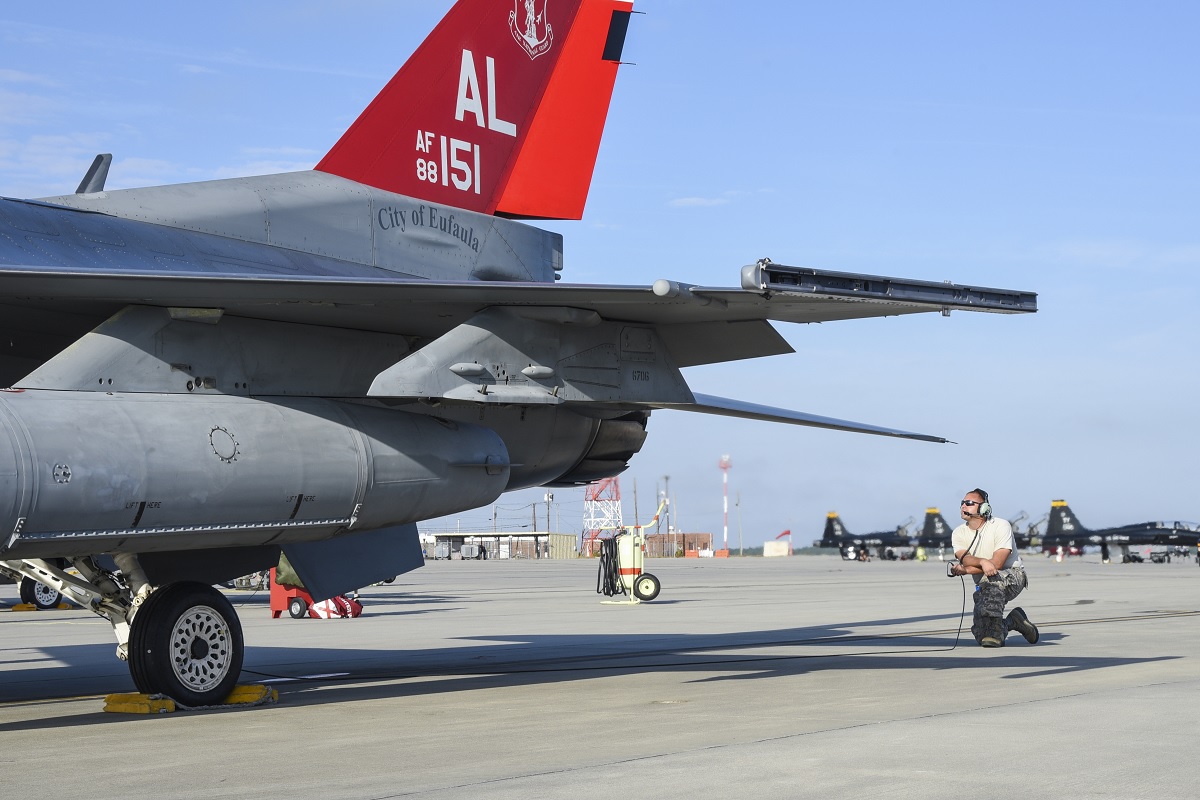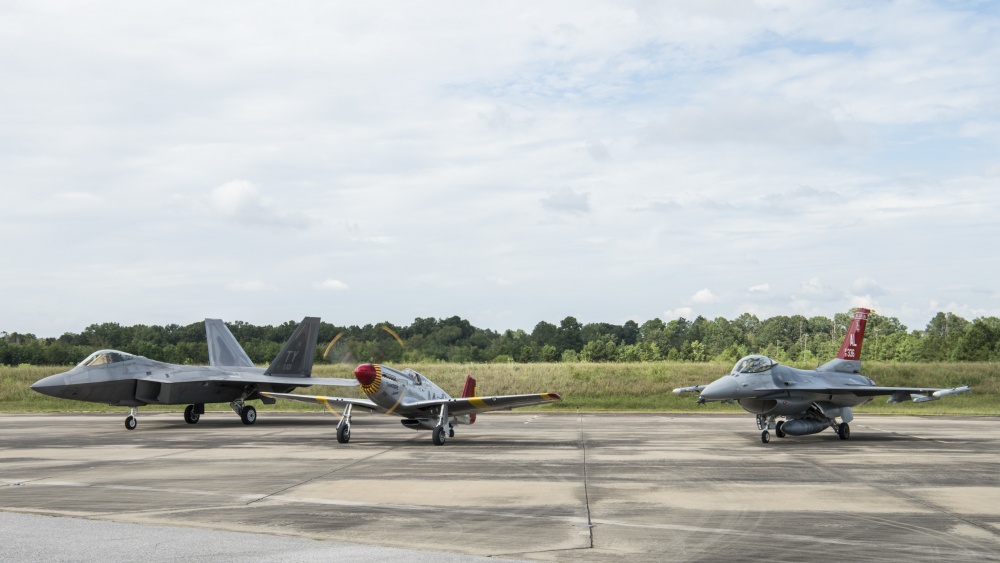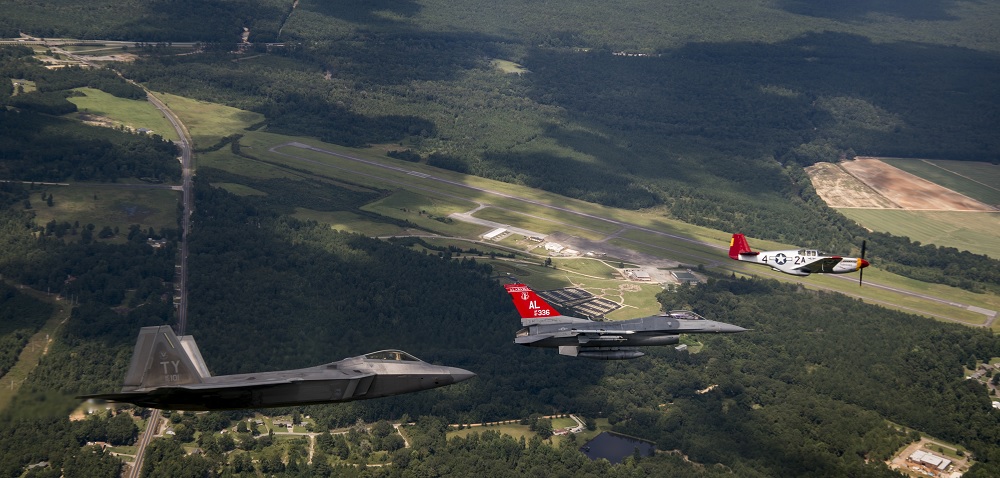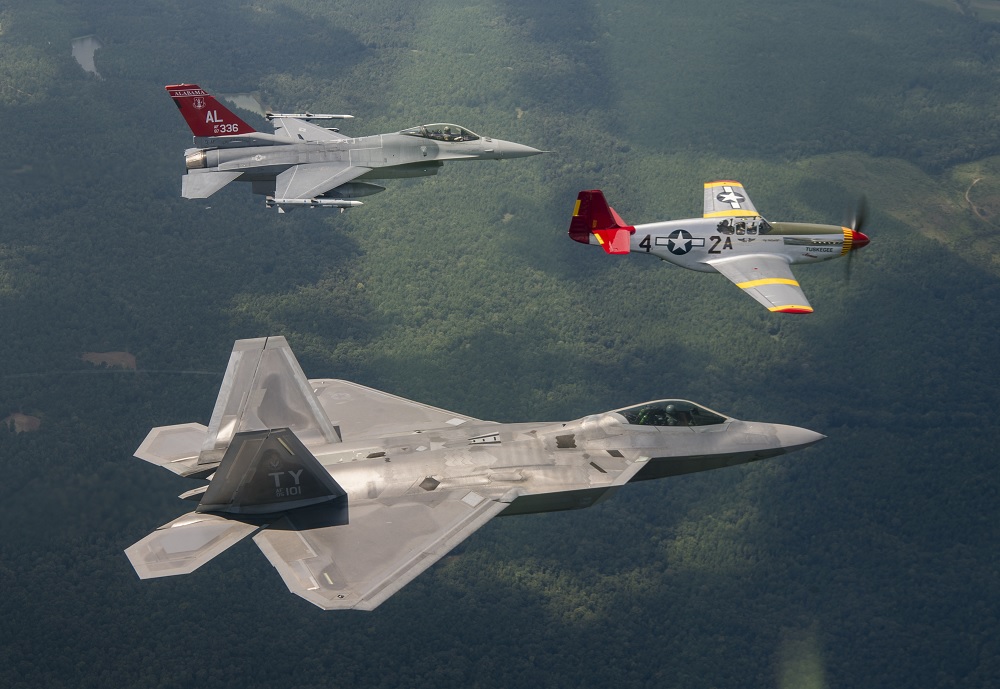The 187th Fighter Wing of the Alabama Air National Guard’s F-16 Vipers carries on the Tuskegee Airmen’s legacy
The Tuskegee Airmen’s legacy has given the 332nd Air Expeditionary Wing (AEW) airmen a strong sense of pride. A significant part of the wing’s history has once more made its way back to its flightline, as stated by Master Sgt. Benjamin Wilson of the 407th Air Expeditionary Group Public Affairs in his article Red Tail Legacy comes full circle.
When the Civil Aeronautics Administration approved the Tuskegee Institute’s request to start civilian pilot training in the fall of 1939, the legacy of the Tuskegee Airmen was established in Montgomery, Alabama. After about a year, the administration of President Franklin D. Roosevelt decided Tuskegee, Alabama would be the location for the Army Air Corps to start training black military pilots.
Thus began the Tuskegee Airmen’s illustrious past. Under the crest of the 332nd Fighter Group, the Airmen bravely fought during World War II while piloting P-51 Mustangs with distinctive red tail paint. A red-tailed fighter plane from Montgomery is once more flying with the 332nd after more than 75 years.
The 187th Fighter Wing of the Alabama Air National Guard has received the Tuskegee Airmen’s lineage. One of the squadrons assigned to the 332nd AEW is the 134th Expeditionary Fighter Squadron (EFS), where an F-16 Viper from the unit is currently operating.
“It is well documented that our WWII bomber pilots would look out their windows and gain confidence from Red Tail fighters flying beside them. It has been stated they took comfort in knowing their chances for survival were higher with a Red Tail escort than from any other outfit in 12th and 15th Air Force,” said Col. David C. Lyons, 407th Air Expeditionary Group commander. “Now we have one of those Red Tails on our flight line, once again flying with the 332nd and creating the next chapter of Red Tail history.”
The unit’s goal is to assist the Combined Joint Task Force commander’s Operation Inherent Resolve (OIR) in the fight against ISIS by supplying air-to-ground combat airpower when needed. With more than 500 missions flown, more than 800 weapons delivered, and substantial contributions to the fights in Mosul, Iraq, and Raqqa, Syria, the 134th EFS has been deeply involved in the conflict.
“We are talking about liberating cities,” Lyons said. “That is something we haven’t talked about in this way since World War II.”
The Vermont Air National Guard (ANG) is deploying the Airmen of the 134th EFS to fly missions to liberate cities in Iraq and Syria.
To make sure the squadron had enough capable aircraft to meet the short-notice deployment to support OIR, the red tail was sent to the Vermont ANG along with F-16s from the New Jersey and Wisconsin Air National Guards. The sight of the red tail on the flightline alongside his unit fills at least one Vermont ANG airman with a special sense of pride.
Chief Master Sgt. Brian Senecal, 407th Expeditionary Maintenance Squadron, had the chance to host Col. Charles McGee at a formal dinner given by the Vermont ANG. As a member of the Tuskegee Airmen and having flown 409 combat flights in World War II, the Korean War, and the Vietnam War, McGee holds a record for the U.S. Air Force.
“Honestly it was the highlight of my whole military career to spend time with the guy – to meet someone who gave some much,” Senecal said. “Most Soldiers and Sailors were welcomed back from World War II with open arms and the Tuskegee Airmen had to come back to a still-segregated America.”
Despite the prejudice they encountered at the time, the Tuskegee Airmen’s pioneering work has established a legacy of which all Airmen can be proud.
“It is an honor to continue the tradition started by the original Tuskegee Airmen and to be carrying on their good name 75 years later,” Senecal said.

Photo by Staff Sgt. Matthew Bruch / U.S. Air Force; Airman 1st Class Hayden Johnson / U.S. Air National Guard







